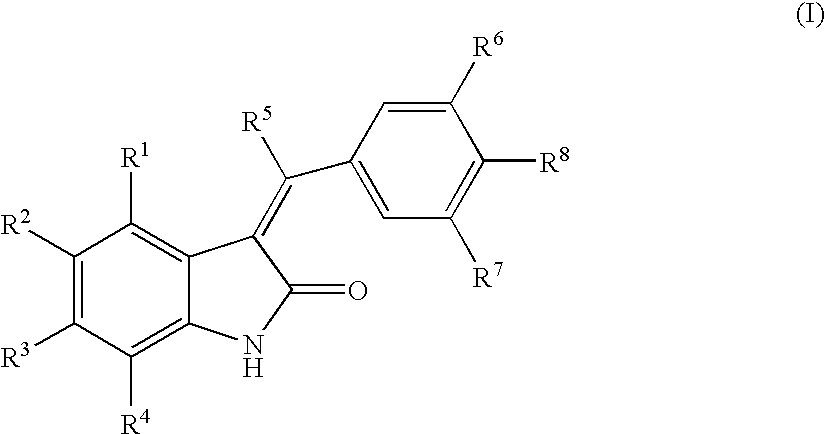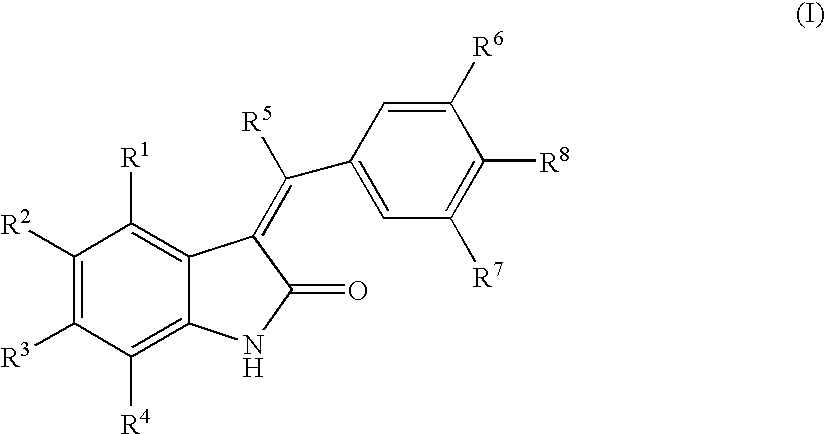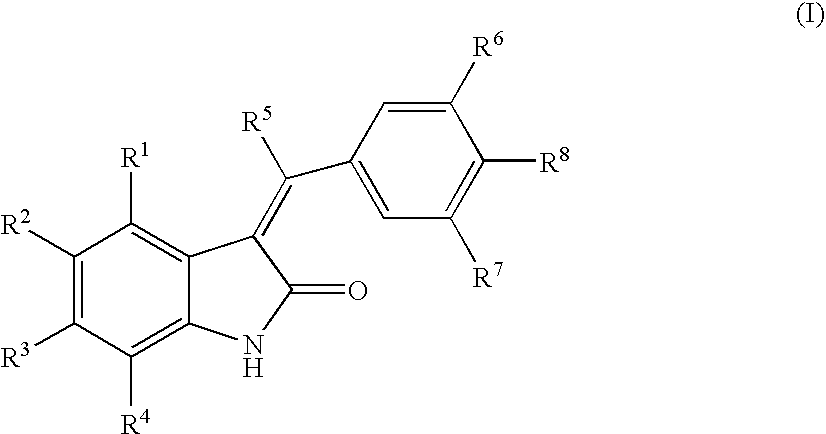Use of C-Raf inhibitors for the treatment of neurodegenerative diseases
- Summary
- Abstract
- Description
- Claims
- Application Information
AI Technical Summary
Benefits of technology
Problems solved by technology
Method used
Image
Examples
examples
[0146] FIGS. 1A-D shows the neuroprotective effect of the C-Raf inhibitor, {5-Iodo-3-[(3,5-dibromo-4-hydroxyphenyl) methylene]-2-indolinone} (“GW5074”), according to a preferred embodiment of the invention. Cultured cerebellar granule neurons undergo apoptosis when switched from HK to medium containing LK (D'Mello et al., 1993). However, as shown in FIGS. 1A-1D, treatment with GW5074 prevents LK-induced apoptosis in these cultures. FIGS. 1A-1C provide phase contrast micrographs showing the morphological appearance of cerebellar neuronal cultures treated with high potassium (HK)(FIG. 1A), low potassium (LK) (FIG. 1B), or LK+1 uM GW5074 for 24 hours (FIG. 1C). Cerebellar neurons exposed to low potassium conditions but treated with the C-Raf inhibitor, GW5074, survive as well as neurons exposed to normally high potassium conditions. FIG. 1D quantifies the anti-apoptotic effect of GW5074. Neuronal cultures were switched to medium containing LK, or LK medium containing different doses of...
PUM
| Property | Measurement | Unit |
|---|---|---|
| Fraction | aaaaa | aaaaa |
| Fraction | aaaaa | aaaaa |
| Fraction | aaaaa | aaaaa |
Abstract
Description
Claims
Application Information
 Login to View More
Login to View More - R&D
- Intellectual Property
- Life Sciences
- Materials
- Tech Scout
- Unparalleled Data Quality
- Higher Quality Content
- 60% Fewer Hallucinations
Browse by: Latest US Patents, China's latest patents, Technical Efficacy Thesaurus, Application Domain, Technology Topic, Popular Technical Reports.
© 2025 PatSnap. All rights reserved.Legal|Privacy policy|Modern Slavery Act Transparency Statement|Sitemap|About US| Contact US: help@patsnap.com



